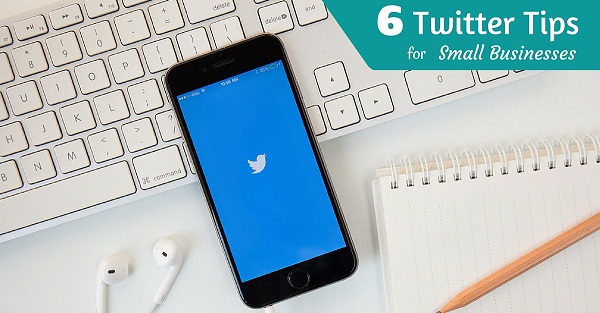

It’s no secret that social media is a key feature in the marketing and branding of today’s small businesses in Ireland...
Without it, it’s difficult to have your brand’s voice heard and near impossible to make it grow.
Utilising Twitter for growth of your business is strategic, and can certainly be daunting, but once understood, it can be a wonderland for networking and building new connections for your brand.
Engagement is one of the most important things you can do with Twitter. You will quickly realise that once you start acknowledging others, they will start acknowledging you. Follow those who may be interested in your brand and other local businesses. Favourite tweets, retweet good content and most importantly, respond to tweets. Thank people for following you or for recommending your business to others. People will always want to see a personality and they will always want someone to talk to. The more you engage with others, the more they will engage with you, thus building many connections along the way.
Tweetdeck is a desktop tool to help you stay on top of all of your engagements. You can make individual columns for your feed, your mentions, your lists and more, allowing you to see everything in one place.
Local Irish online shop Hippenings makes a habit of interacting with customers and retweeting any mentions of the brand.
Got my fab ban.do travel mug yday & it's the biz!! If you haven't been to @hippenings yet you need to! pic.twitter.com/6337ErXAPm
— Níamhi (@niamhi) September 11, 2015
Twitter decided to add inline images to tweets in 2013, meaning that you no longer have to click on the tweet to see the image. Buffer experimented with this and found that tweets with images received 18% more clicks than those without. They also received 89% more favourites and 150% more retweets. Using images that are relevant and speak for your brand can be extremely beneficial in terms of recognition and engagement.
Canva is a great tool to use if you want to put together an image for a tweet that looks good and speaks to your brand. It allows you to select the dimensions perfectly formatted for Twitter and the freedom to design your own graphic.
Timing plays a very important role in your Twitter strategies. There will always be better times of the day to tweet than others. Alas, the very last thing you want to be doing is spending all day looking at Twitter wondering when to tweet. Buffer is a great app to use to help you stay organised. The recommended optimum tweeting times are between 9am-4pm, showing the most activity and the highest number of clickbacks. Buffer allows you to schedule your tweets for specific times of the day, meaning you don’t have to worry about being on hand to tweet, and it ensures your highest potential reach throughout the day. It will also allow you to include images in your tweets, it automatically shortens any links you have included, as well as giving you some insight into analytics. Buffer analytics let you know which scheduled tweets are doing well and which aren’t doing so well - so you can always be on top of your scheduling with what works for your brand.
Made famous by Twitter, the hashtag is a highly effective strategy, particularly for small businesses. A short, sweet, simple and clear hashtag that is relevant to your brand can be a huge driver for brand recognition. A perfect example is Irish tan brand Cocoa Brown Tan, who have recently been using the #CocoaBrownAW15 hashtag to build excitement for their new product launch, which is being used by customers, new customers and bloggers alike.
Ultimately, hashtags allow users to search for particular topics that interest them - so using a relevant hashtag within your tweets every now and again means people are more likely to find your tweet if it’s what they’re looking for. Hashtags can occur anywhere within a tweet, however it is important to remember that it is not worthwhile to spam your tweets with them. One hashtag is great, two is plenty. Twitter recommends no more than 2 per tweet as using anymore actually devalues the strength of each hashtag.
Oh what is in the bag from #CocoaBrownAW15 ? All to be revealed on September 28th! pic.twitter.com/8tmsiIaIa2
— Lorna Weightman (@styleisleIRL) September 22, 2015
In a similar sense to Buffer Analytics, Twitter Analytics is a goldmine of information allowing you to see what you’re doing right and what leaves room for improvement overall. The user-friendly dashboard outlines which tweets are performing best, the number of impressions they are receiving, growths and drops in followers, mentions, profile visits and more. It gives you a monthly summary, allowing you to make a quick and easy comparison month to month.
Looking for patterns within your information gives you an idea on how well certain strategies are working - such as the time of day your tweets go out, which links are clicked and shared, who responds and so on. This leaves room for you to experiment on your strategies. For example, if you’re seeing a lot of impressions per tweet but not so many clicks, perhaps finding a more compelling way to word the tweet can work in your favour.
Once you’ve got the basics of Twitter down and you have established your presence, it’s important to stay consistent if you want your following to continue to grow. It is important to stay consistent with both your content and your Twitter activity. Posting something irrelevant to your brand or falling off the Twittersphere can negatively impact both your following and your reputation. Simply tweeting daily can keep your presence firmly established.
It certainly takes time and a craft, but once you have it grasped, Twitter can be a highly valuable social media platform for the growth of your business.